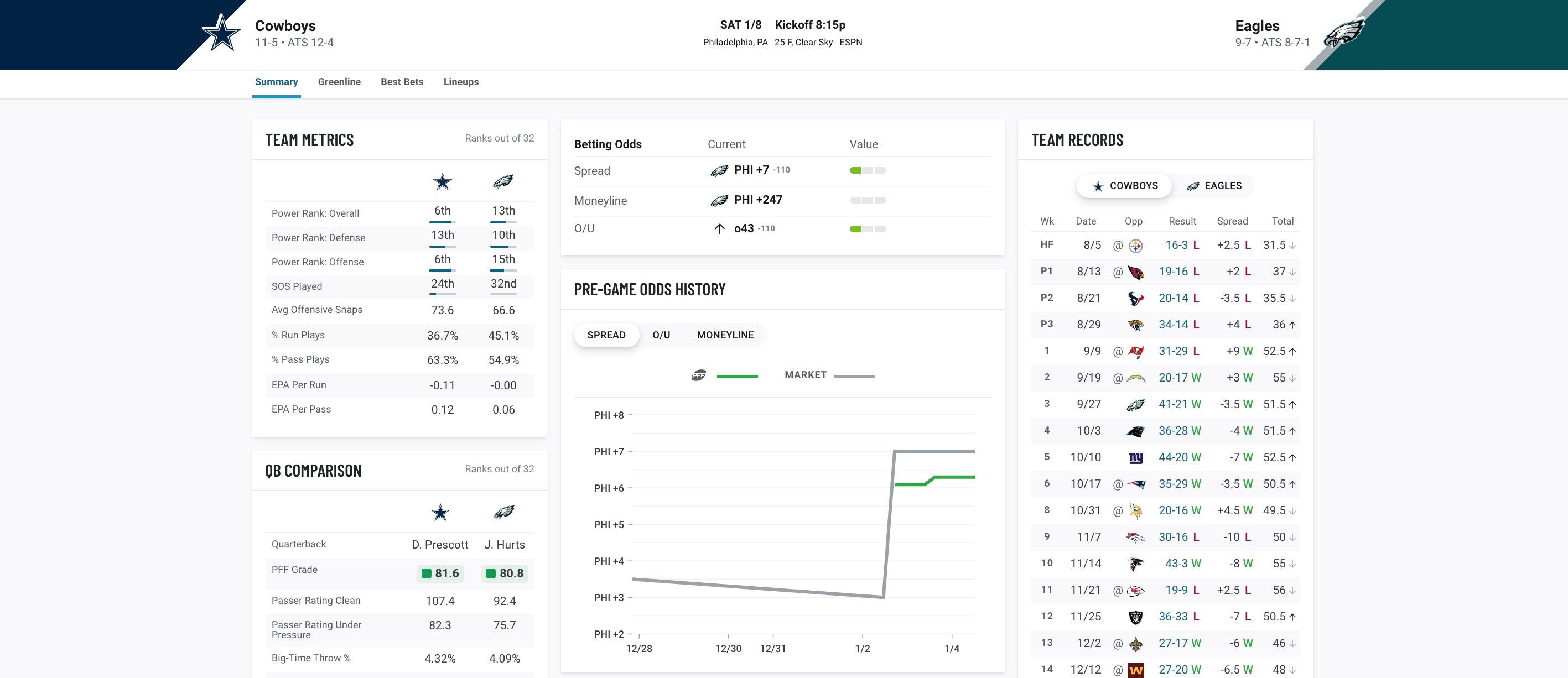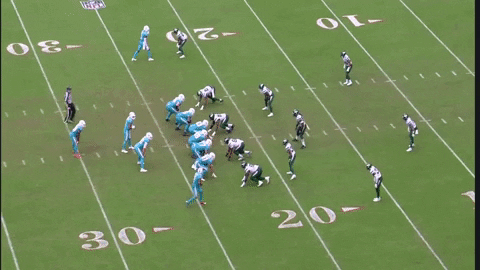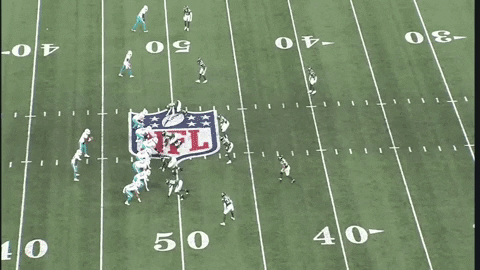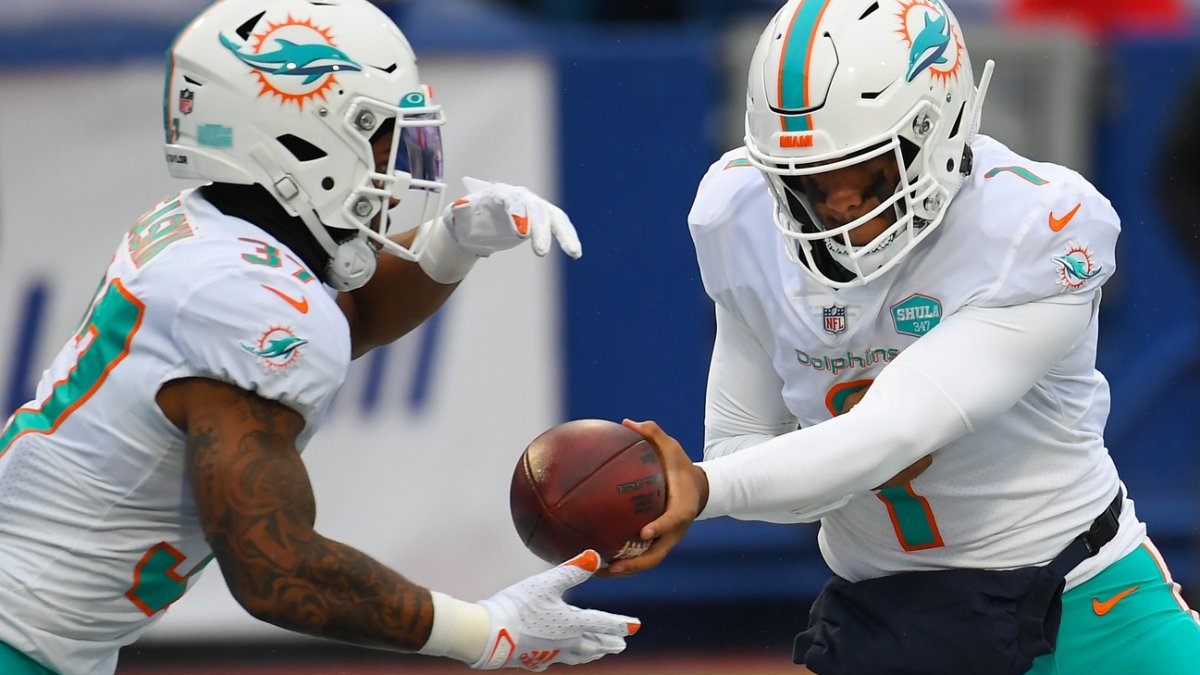A good gimmick will always have a place in sports. A great gimmick will lead the game into a new era.
In hoops, “seven seconds or less” ultimately became “pace and space,” reaching its peak with a Golden State Warriors team that married the approach with the philosophies of the San Antonio Spurs’ ball-movement offense. The “motion” offense of today moves at hyperspeed, with more screens and cuts than seem possible in 24 seconds.
On the diamond, the 2014-15 Kansas City Royals leaned hard into stocking their rotation with power pitchers and using as many relievers as they could. The 2015 team won the World Series with 15 pitchers logging 40 or more innings, mowing through the playoffs with an assembly line of fresh arms. Now, it seems that almost all starters have a hard-out at five or six innings if they aren’t working on a shutout or no-hitter.
Click here for more PFF tools:
Rankings & Projections | WR/CB Matchup Chart | NFL & NCAA Betting Dashboards | NFL Player Props Tool | NFL & NCAA Power Rankings
Best Bets Tool
On the gridiron, the run-pass option (RPO) will define the next half-decade.
Through 17 weeks of the 2021 NFL season, 14 of the league's 32 teams have run 100 or more RPOs, setting a new high watermark. Five seasons ago, only six teams crossed that threshold.
The conversation around the run-pass option has been at the forefront of the sport over recent years, but the context is almost always centered around the best offenses in the NFL. The Philadelphia Eagles and Kansas City Chiefs have taken “ride and decide” football to Super Bowl wins, whereas the Arizona Cardinals and Green Bay Packers have featured their quarterbacks' unique skill sets within their RPO packages.
| Dolphins' offensive performance | NFL Rank (since Week 9) |
| Drives per game | 3rd |
| Expected points added (EPA) per play | 23rd |
| Success rate | 25th |
| Scoring drive % | 25th |
The Miami Dolphins, on the other hand, were one of the first teams to take up airspace in the RPO discussion without blazing new trails in offensive production.
We can certainly attribute Miami’s seven-game win streak to some turnover luck and good fortune in scheduling. And, while it feels implausible to say an offense in the bottom half of most efficiency rankings was “maximized,” that is an accurate description of the Dolphins’ last two months.
It’s important to do a retrospective on Miami’s hot streak, not just for the sake of evaluating quarterback Tua Tagovailoa’s future with this franchise, but to also look at how an RPO can and can’t prop up an offense with clear deficiencies.
Editor's note: All data referenced is since NFL Week 9

Running Defenses Out of Split Safeties
| Miami’s RPO handoffs, by safety shell | Carries | Yards per carry | 1st Down/TD% | % of yards before contact | Stuffed rate |
| Single High | 24 | 2.9 | 17% | 30% | 17% |
| Split Safety | 27 | 3.9 | 11% | 32% | 4% |
About a month ago, I delivered a soliloquy on RPOs as framed around the Miami Dolphins offense, which runs their flavor of option offense differently than others. But, at the end of the day, the RPO can only be as effective as a team's ability to punish a defense for forcing the handoff.
A key piece to this puzzle is knowing when a defense is playing the pass before the read even happens. An offense accomplishes this by looking at the safety shell pre-snap and attacking the “bubble,” the uncovered space in the box or on the perimeter.
Related content for you:
- A brief dialogue about RPOs in the NFL by Diante Lee
- Re-evaluating running NFL offenses based on RPOs by Eric Eager
When a defense leaves both safeties high, the box is “light,” and there is an even number (or even more) of blockers to match up with defenders in the core of the formation. This is an invitation to take yardage on the ground, as it’s more likely to get your back up to the second level.
For Miami, running into lighter boxes not only generated an extra yard on the ground, but it also made it four times less likely that their running back would be stopped at or behind the line of scrimmage.
Miami reaps the benefits of greater rewards and lower risks, a rare occurrence in playcalling. The Dolphins’ top two RPO run concepts since Week 9, a man and a zone scheme, went for 76 yards on 19 carries against two-high safeties and was never “stuffed” at or behind the line of scrimmage.

If a safety drops down, the box becomes “loaded,” and the degree of difficulty on RPO handoffs shoots up. When a box is loaded, there’s likely an unblockable defender on the edge or at the point of attack. When that unblocked player is at the line of scrimmage, the offense has to find a way to manipulate enough space to create a running lane that did not exist before the snap, or the defense will squeeze the air out between the tackles.

Dolphins running back Myles Gaskin averages 3.8 yards per carry on RPO handoffs into light boxes and 2.2 yards per carry into loaded ones. In all, 28% of his yards come before contact against light boxes compared to just 4% when loaded.
Exclusive content for premium subscribers

WANT TO KEEP READING?
Dominate Fantasy Football & Betting with AI-Powered Data & Tools Trusted By All 32 Teams
Already have a subscription? Log in



 © 2025 PFF - all rights reserved.
© 2025 PFF - all rights reserved.